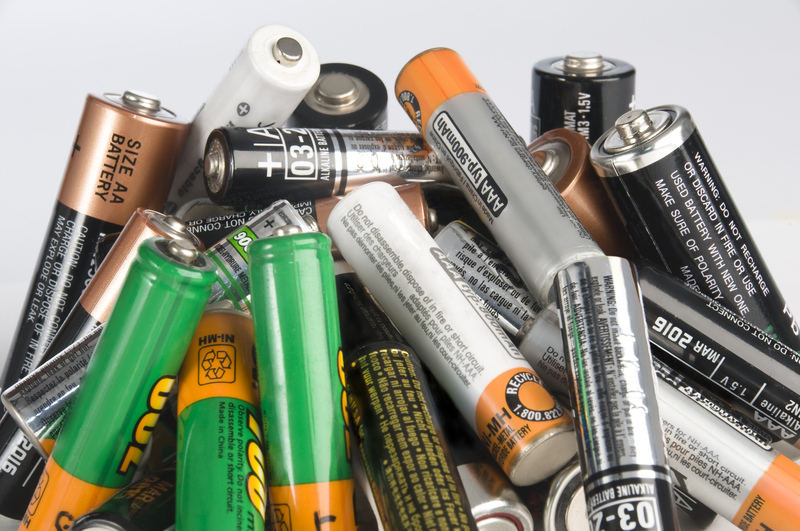Transforming Waste into Tomorrow's Renewable Energy
In the quest for sustainable energy sources, attention is increasingly turning to an unexpected solution - waste transformation into renewable energy. This innovative approach promises not only to tackle the pressing global waste crisis but also to contribute to a cleaner and more sustainable future. In this article, we'll explore the processes, benefits, and challenges associated with converting waste into a valuable energy resource.
Understanding Waste as a Resource
Every year, the world generates billions of tons of waste, ranging from household garbage to industrial by-products. Instead of viewing this as a problem, modern technology enables us to reimagine waste as a resource that can be harnessed to produce energy. This concept aligns with the principles of a circular economy, where waste is minimized, and resources are continually repurposed.
Types of Wastes Suitable for Energy Conversion
- Organic Waste: Includes food scraps, garden waste, and agricultural residues. This type of waste is ideal for biogas production through anaerobic digestion.
- Municipal Solid Waste (MSW): Household and commercial garbage that can be transformed into energy via technologies like incineration and gasification.
- Industrial Waste: By-products from manufacturing processes, which can often be utilized in energy recovery systems.

Technologies Transforming Waste into Energy
The conversion of waste into renewable energy relies on several sophisticated technologies, each suited to different types of waste and energy needs.
Anaerobic Digestion
Anaerobic digestion is a process in which microorganisms break down organic matter in the absence of oxygen. This treatment method for organic waste leads to the production of biogas, which predominantly consists of methane and carbon dioxide. Biogas can be used directly in gas engines for electricity and heat or upgraded to biomethane for use as vehicle fuel.
Incineration with Energy Recovery
Incineration involves the combustion of waste at high temperatures. The heat produced during this process can generate steam, driving turbines to produce electricity. Modern waste-to-energy plants incorporate sophisticated systems to reduce emissions and increase efficiency.
Gasification and Pyrolysis
Both gasification and pyrolysis convert waste into synthetic gas (syngas) or liquid fuels. These processes take place at controlled temperatures without the presence of oxygen (pyrolysis) or with limited oxygen (gasification). This syngas can be used to generate electricity or synthesized into chemicals and fuels.
Plasma Arc Gasification
This is an advanced form of gasification where temperatures reach up to 7,000 degrees Celsius using plasma torches. This method breaks down almost any waste material into its basic molecules, promoting high energy efficiency and minimal environmental impact.
Benefits of Waste-to-Energy Conversion
Converting waste into energy offers a multitude of environmental and economic benefits, positioning it as a pivotal strategy in sustainable energy development.
- Reduction in Landfill Use: By redirecting waste from landfills to energy facilities, the strain on landfill sites is dramatically lessened, reducing methane emissions and soil contamination.
- Lower Greenhouse Gas Emissions: Waste-to-energy processes reduce the release of greenhouse gases compared to conventional waste disposal methods.
- Energy Security: Utilizing local waste as an energy source can decrease dependency on fossil fuels and enhance energy security, especially in urban areas.
- Economic Opportunities: Development and operation of waste-to-energy facilities create jobs and stimulate economic growth in local communities.
Challenges Facing Waste-to-Energy Technologies
Despite its potential, the journey of transforming waste into energy is not without its challenges. Addressing these issues is crucial for the broad-scale adoption of these technologies.
High Initial Costs
The establishment of waste-to-energy plants can be capital-intensive, requiring significant investment in technology and infrastructure. However, over time, operational efficiencies and the sale of energy and by-products can offset these costs.
Regulatory and Environmental Concerns
Ensuring compliance with stringent environmental regulations can be challenging. Moreover, public perception often associates waste-to-energy plants with pollution, necessitating transparency and community engagement to garner support.
Technological Limitations
Variability in waste composition can affect the efficiency and output of waste-to-energy systems. Continued research and development are essential to overcome these challenges and optimize processes.

Future Prospects for Waste-as-an-Energy Resource
As technology continues to advance, the potential of waste as an energy resource becomes increasingly promising. Innovations in catalysis and bioengineering are likely to enhance the efficiency and scalability of these systems. Furthermore, integration with smart grid technologies and digital monitoring systems could optimize the operations of waste-to-energy plants.
On a policy level, government incentives and supportive regulations will play a crucial role in accelerating the adoption of waste-to-energy technologies. Encouraging public-private partnerships could further enhance innovation and investment in this sector.
Conclusion
Transforming waste into tomorrow's renewable energy presents a compelling pathway towards sustainable development. By tapping into the potential of waste, we can reduce environmental impact, generate clean energy, and move closer to achieving a zero-waste future. As the global demand for energy rises and environmental concerns grow, waste-to-energy conversion will undoubtedly become a cornerstone of the renewable energy landscape, fostering a more sustainable and resilient world.